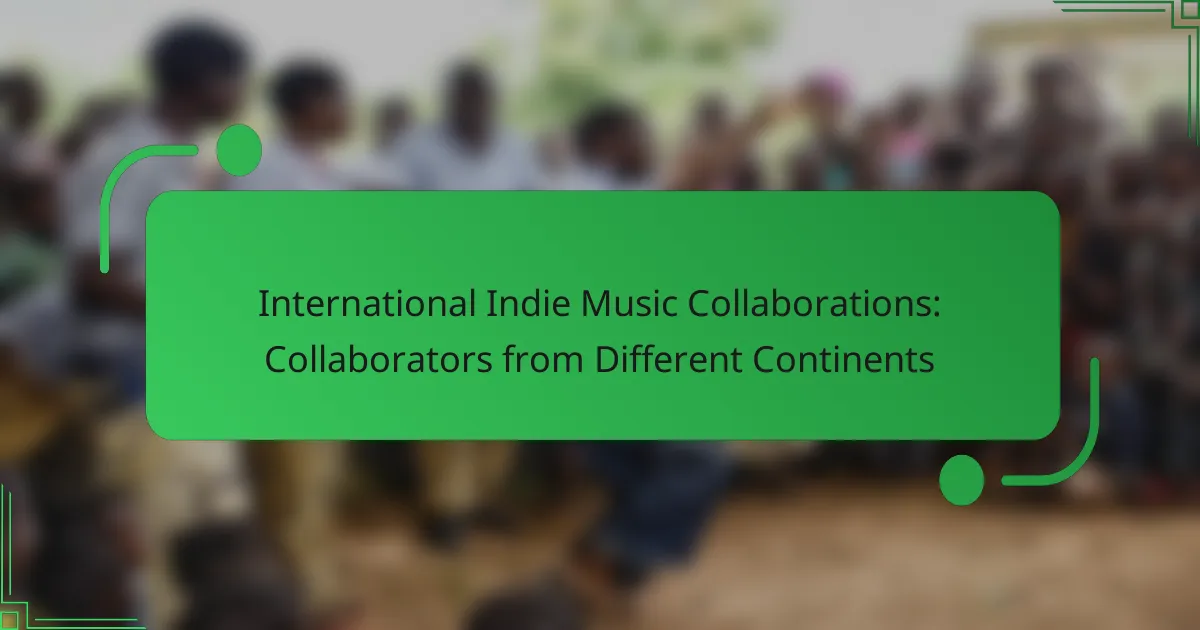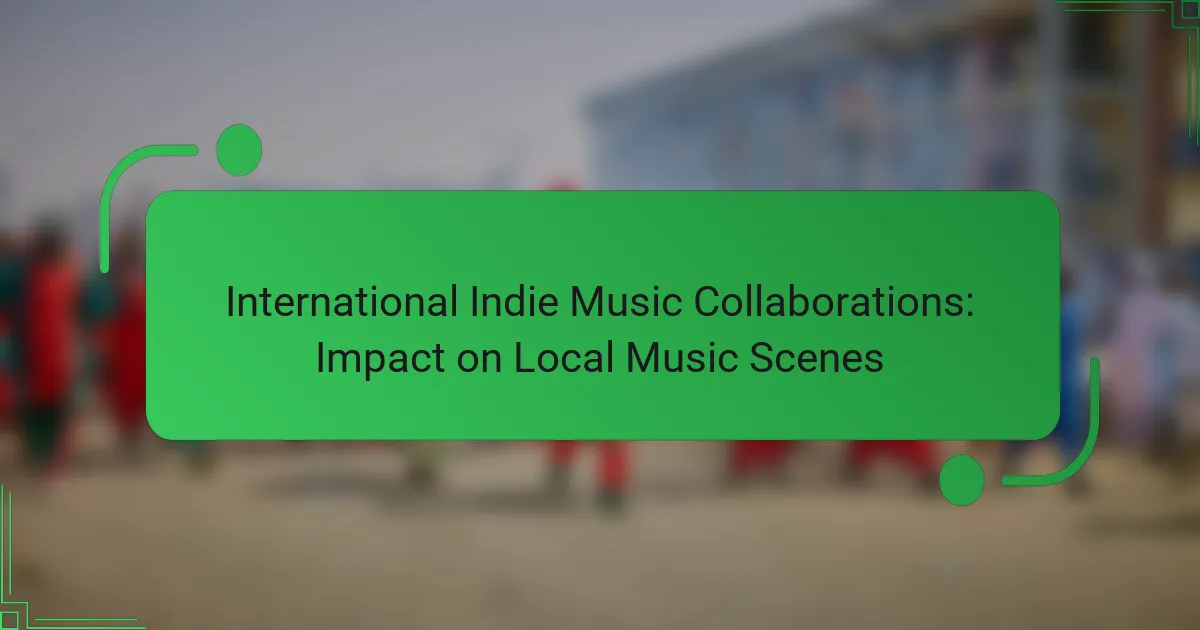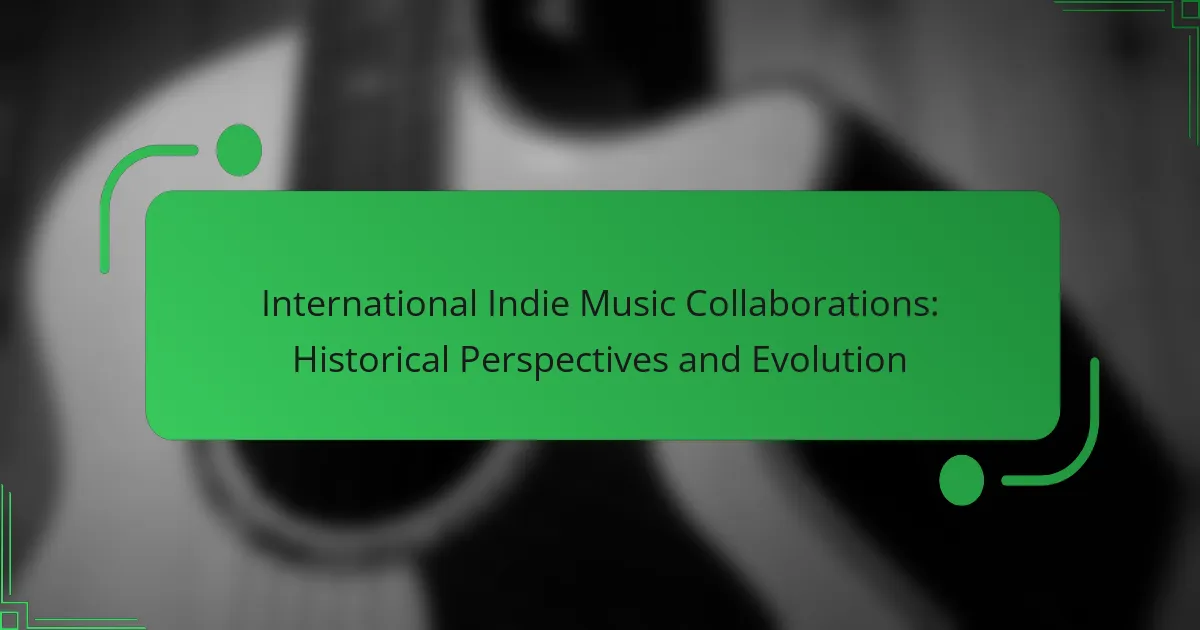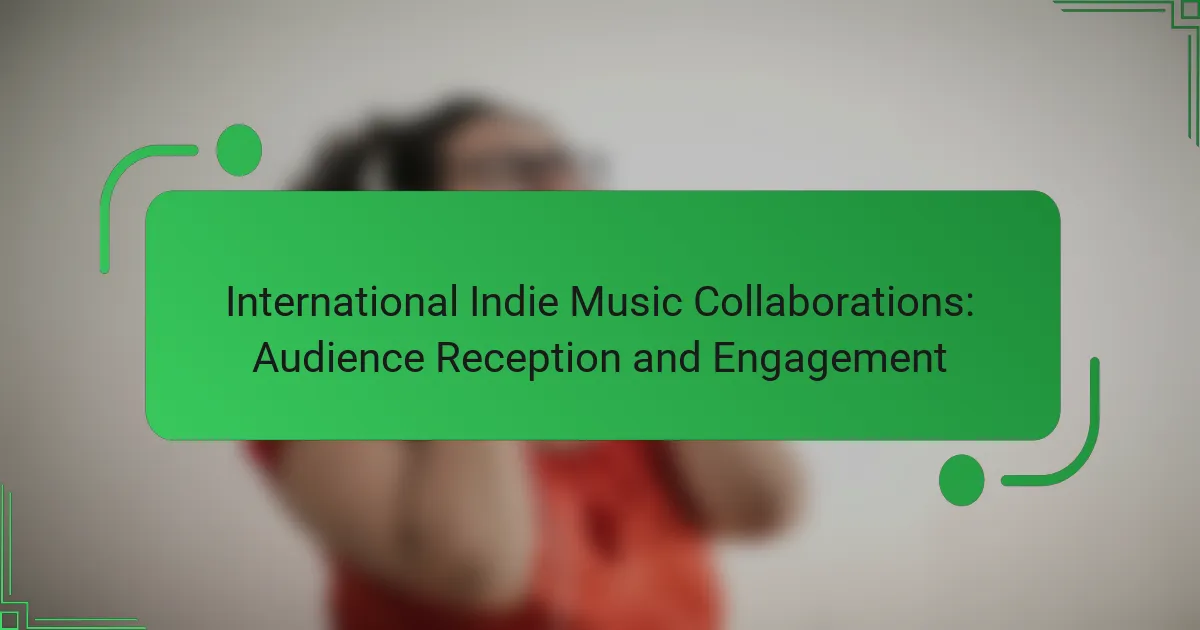International indie music collaborations thrive on technology, enhancing creativity and expanding audience reach. Digital platforms facilitate seamless communication and real-time co-creation across borders. Innovative tools like AI-driven software and cloud storage streamline production processes. These advancements foster cultural exchange and unique soundscapes, reshaping the global music landscape.
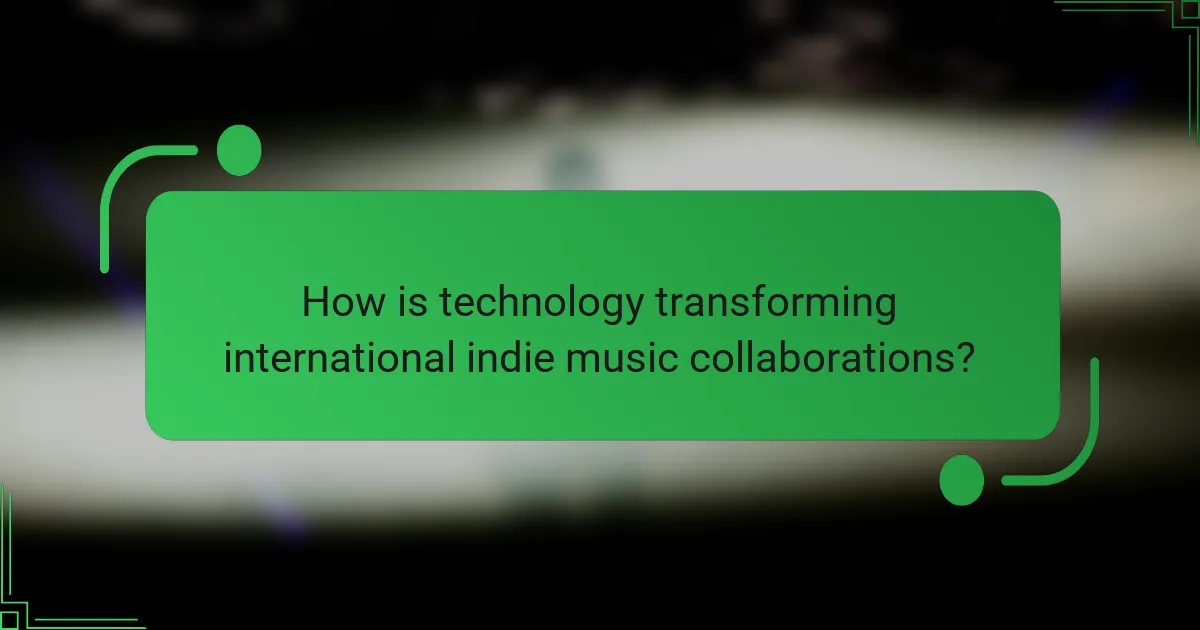
How is technology transforming international indie music collaborations?
Technology is revolutionising international indie music collaborations by enhancing connectivity and accessibility. Digital platforms facilitate real-time collaboration across borders, allowing artists to co-create seamlessly. Tools like cloud storage and collaborative software enable sharing of high-quality audio files instantly. As a result, diverse musical influences merge, enriching the indie music landscape. Moreover, social media amplifies exposure, connecting artists with global audiences and fostering unique partnerships. This technological transformation broadens creative possibilities and democratises the music-making process, empowering indie artists worldwide.
What are the key technological tools used in music collaboration?
Key technological tools in music collaboration include digital audio workstations (DAWs), cloud storage, and communication platforms. DAWs like Ableton Live and Logic Pro enable artists to create and edit music collaboratively. Cloud storage solutions, such as Google Drive and Dropbox, facilitate file sharing and version control. Communication tools like Zoom and Slack enhance real-time collaboration and feedback, fostering creativity across distances. These technologies empower musicians to work together seamlessly, regardless of location, enhancing the indie music scene globally.
How do indie artists leverage digital platforms for global reach?
Indie artists leverage digital platforms to expand their global reach by utilising social media, streaming services, and collaboration tools. These technologies enable artists to connect with diverse audiences and collaborate across borders. Social media platforms like Instagram and TikTok allow for direct engagement with fans, enhancing visibility. Streaming services such as Spotify and Apple Music provide access to international markets, increasing listenership. Collaboration tools like Zoom and cloud-based software facilitate remote partnerships, allowing artists to create music together despite geographical barriers. This technological integration fosters a vibrant, interconnected indie music community.
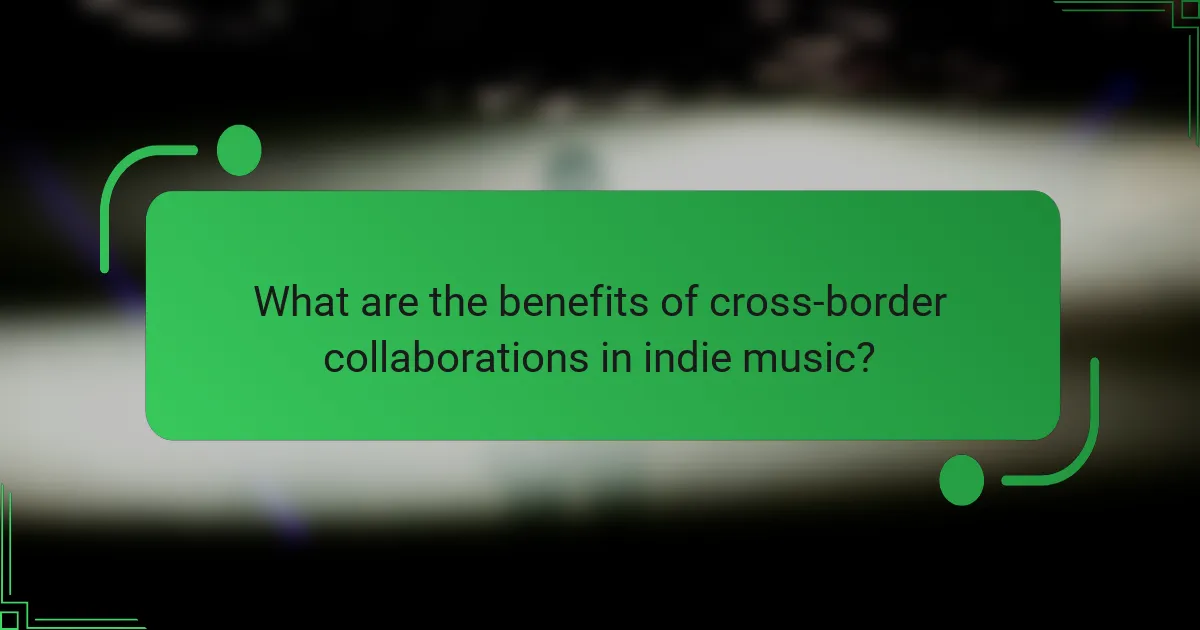
What are the benefits of cross-border collaborations in indie music?
Cross-border collaborations in indie music enhance creativity, expand audience reach, and foster cultural exchange. These partnerships leverage technology, enabling artists to collaborate remotely and access diverse influences. As a result, unique soundscapes emerge, enriching the global music landscape. Such collaborations often lead to innovative marketing strategies, increasing visibility and revenue opportunities for indie musicians.
How do diverse cultural influences enhance music creation?
Diverse cultural influences significantly enhance music creation by fostering innovation and collaboration. International indie music collaborations leverage technology to connect artists from different backgrounds, resulting in unique sounds and perspectives.
Technological tools, such as digital audio workstations and online collaboration platforms, enable seamless communication and sharing of ideas. This accessibility allows artists to blend genres and traditions, creating hybrid musical forms that reflect a globalised world.
Moreover, exposure to diverse musical styles enriches the creative process. Artists can draw inspiration from various cultural elements, leading to original compositions that resonate with wider audiences.
Ultimately, these collaborations not only expand artistic boundaries but also promote cultural exchange, enhancing the richness of the global music landscape.
What role does networking play in successful collaborations?
Networking is crucial for successful collaborations in international indie music, as it fosters connections and enhances creativity. It enables artists to share resources, ideas, and skills, leading to innovative musical projects. Technology facilitates these interactions, allowing musicians from different locations to collaborate seamlessly. Through platforms and tools, artists can communicate effectively, share files, and co-create in real-time, breaking geographical barriers. This interconnectedness not only enriches the creative process but also expands audiences, making collaborations more impactful.

Which challenges do indie artists face in international collaborations?
Indie artists face several challenges in international collaborations, primarily due to technological limitations and cultural differences. Communication barriers can hinder creative processes, while varying music industry standards complicate project management. Additionally, financial constraints often restrict access to high-quality production tools and platforms. Time zone differences can also disrupt collaboration schedules, affecting the overall workflow. These factors collectively impact the effectiveness and success of international indie music partnerships.
How do language barriers affect music creation and collaboration?
Language barriers can hinder music creation and collaboration by limiting communication and understanding among international artists. Technology mitigates these challenges by providing tools for translation and collaboration. For instance, digital platforms enable real-time communication, allowing musicians to share ideas and feedback despite language differences. Additionally, software for music production often includes features that facilitate collaboration, such as cloud storage and project sharing. These advancements foster creativity and innovation in international indie music collaborations, enabling artists to work together effectively despite linguistic obstacles.
What are the common legal issues in cross-border music partnerships?
Common legal issues in cross-border music partnerships include copyright infringement, licensing agreements, and jurisdictional disputes. These challenges arise due to varying laws across countries. Additionally, different interpretations of intellectual property rights can complicate collaborations. Artists must navigate these complexities to protect their work and ensure fair compensation.
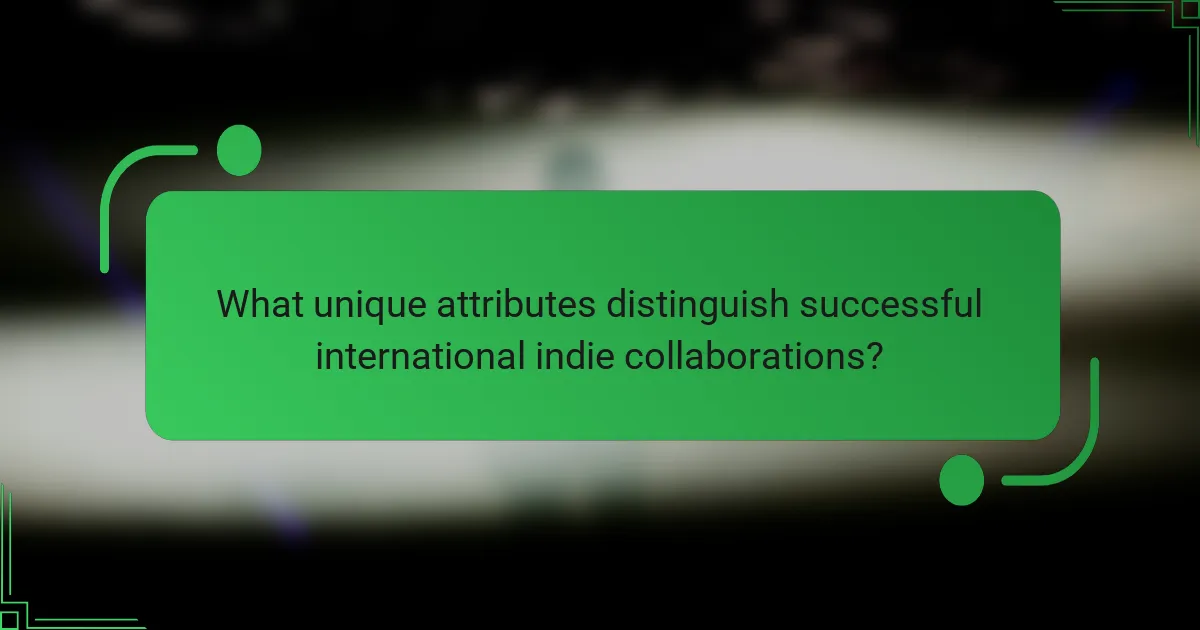
What unique attributes distinguish successful international indie collaborations?
Successful international indie collaborations are distinguished by innovative use of technology, cultural exchange, and diverse artistic influences. Technology enables seamless communication and collaboration across borders, allowing artists to create and share music in real-time. Cultural exchange enriches the creative process, blending various musical styles and traditions. Diverse artistic influences lead to unique soundscapes that appeal to a global audience, enhancing the collaboration’s success. Additionally, platforms for streaming and social media amplify exposure and connect artists with fans worldwide.
How do genre fusions emerge from global partnerships?
International indie music collaborations emerge from global partnerships through technology that facilitates cross-border creativity. Digital platforms enable artists to connect, share ideas, and collaborate regardless of location. These collaborations often blend diverse musical genres, creating innovative sounds that reflect cultural fusion. The accessibility of recording tools and social media enhances visibility and allows for real-time feedback, further enriching the collaborative process. As a result, genre fusions thrive, showcasing the unique attributes of each participating artist while appealing to a global audience.
What innovative collaboration models are being adopted by indie artists?
Indie artists are increasingly adopting innovative collaboration models that leverage technology for remote creation. These models include virtual jam sessions, cloud-based production platforms, and social media collaborations.
Platforms like Splice and Soundtrap allow artists to co-create music in real-time, regardless of location. This approach not only enhances creativity but also expands the reach of indie artists by connecting them with global talent.
Additionally, crowdfunding platforms enable artists to collaborate on projects by pooling resources. This financial backing supports diverse artistic expressions and innovative soundscapes.
The rise of NFTs provides a unique avenue for collaboration, allowing artists to create and share digital art and music in novel ways. These innovative models reflect a shift towards community-driven creativity in the indie music scene.
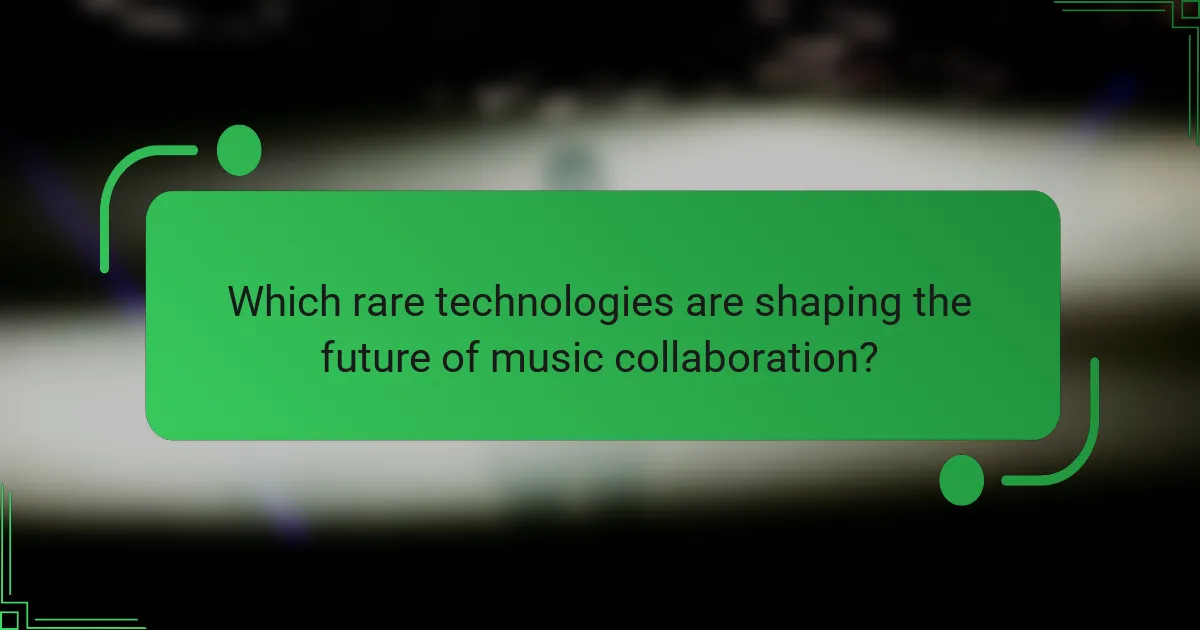
Which rare technologies are shaping the future of music collaboration?
Innovative technologies like AI-driven music software, cloud-based platforms, and virtual reality are transforming international indie music collaborations. These tools enhance creativity and streamline production processes.
AI algorithms analyse musical patterns, suggesting unique compositions and arrangements. Cloud platforms enable seamless sharing and real-time collaboration across borders. Virtual reality allows artists to engage in immersive jam sessions, creating a shared experience despite physical distances.
Additionally, blockchain technology is emerging as a rare attribute, providing transparent royalty tracking and fair compensation for artists. This fosters trust and encourages more musicians to collaborate internationally.
Overall, these technologies are reshaping how indie artists create, connect, and distribute their music globally.
How is artificial intelligence influencing music production and collaboration?
Artificial intelligence is transforming music production and collaboration by enhancing creativity and streamlining processes. AI tools assist artists in generating new sounds, analysing trends, and automating repetitive tasks. This technology enables international indie musicians to collaborate seamlessly, regardless of geographical barriers.
AI-driven platforms facilitate real-time collaboration, allowing artists to share ideas and compositions instantaneously. For example, cloud-based software can host projects where multiple artists contribute their unique skills. This promotes a diverse range of influences and styles, enriching the final product.
Moreover, AI can analyse vast amounts of data to predict listener preferences, guiding artists in their creative decisions. This data-driven approach helps indie musicians tailor their music to audience tastes while maintaining artistic integrity.
As a result, the integration of AI in music production fosters innovative collaborations and expands opportunities for indie artists on a global scale.
What emerging platforms are redefining how artists connect globally?
Emerging platforms like BandLab, Splice, and Soundtrap are transforming global connections for artists. These platforms facilitate remote collaborations, enabling musicians to create and share music seamlessly across borders.
BandLab offers a cloud-based DAW, allowing real-time collaboration and sharing of projects. Splice provides a vast library of samples and tools for musicians to remix and innovate. Soundtrap enhances interaction through its online studio, fostering creativity among diverse artists.
These technologies empower independent musicians to work together, breaking geographical barriers and promoting cultural exchange. As a result, international indie music collaborations flourish, driven by innovative tools that enhance creativity and connection.
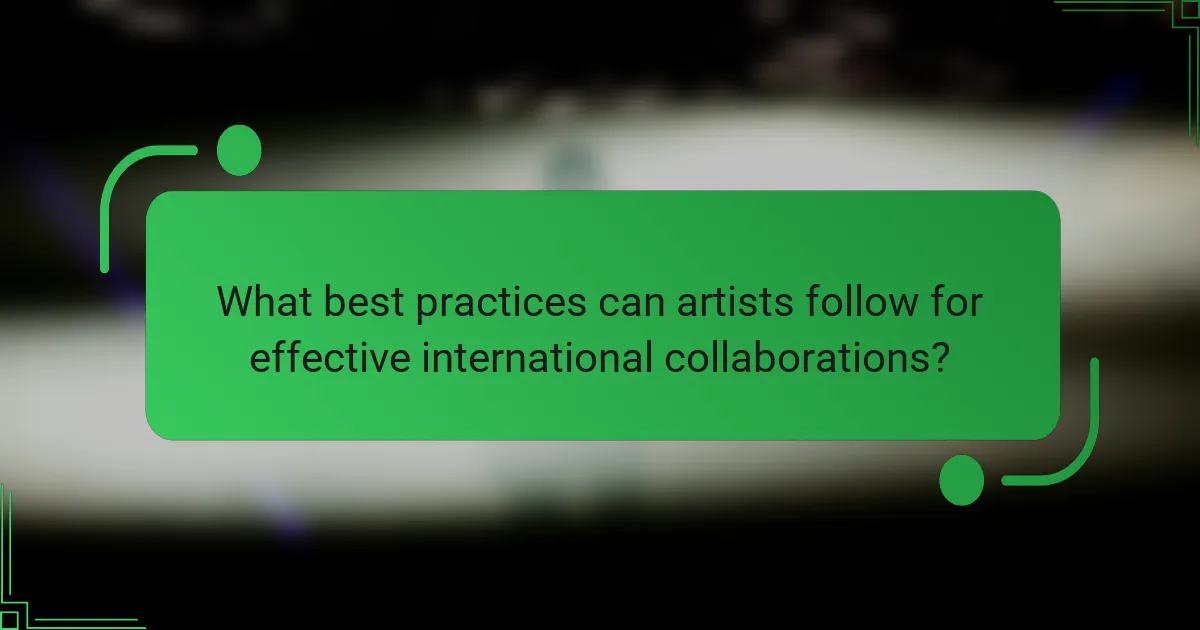
What best practices can artists follow for effective international collaborations?
Artists can enhance international collaborations by leveraging technology for seamless communication and creative processes. Utilising digital platforms fosters real-time collaboration, enabling artists to share ideas and feedback efficiently. Tools like cloud storage and collaborative software streamline the sharing of music files and project updates. Video conferencing applications facilitate face-to-face interactions, which strengthen relationships across distances. Additionally, social media platforms can be effective for networking and discovering potential collaborators globally. Embracing these technologies not only expands artistic reach but also enriches the creative process through diverse perspectives.
How can indie musicians optimize their use of technology in collaborations?
Indie musicians can optimize technology in collaborations by utilising digital tools for communication, file sharing, and project management. Platforms like Zoom and Slack facilitate real-time discussions, while services such as Dropbox and Google Drive streamline file exchanges. Collaborative software like Ableton Live and Splice allows seamless music creation across distances. Additionally, leveraging social media for promotion enhances visibility and engagement. Embracing these technologies fosters creativity and expands collaboration opportunities globally.
What common mistakes should artists avoid in cross-border projects?
Artists should avoid miscommunication, neglecting cultural nuances, and underestimating technology’s role in international collaborations. Clear communication is essential to ensure all parties understand artistic goals. Cultural awareness enhances collaboration and fosters creativity. Utilizing technology effectively can streamline processes and enhance the final product.
